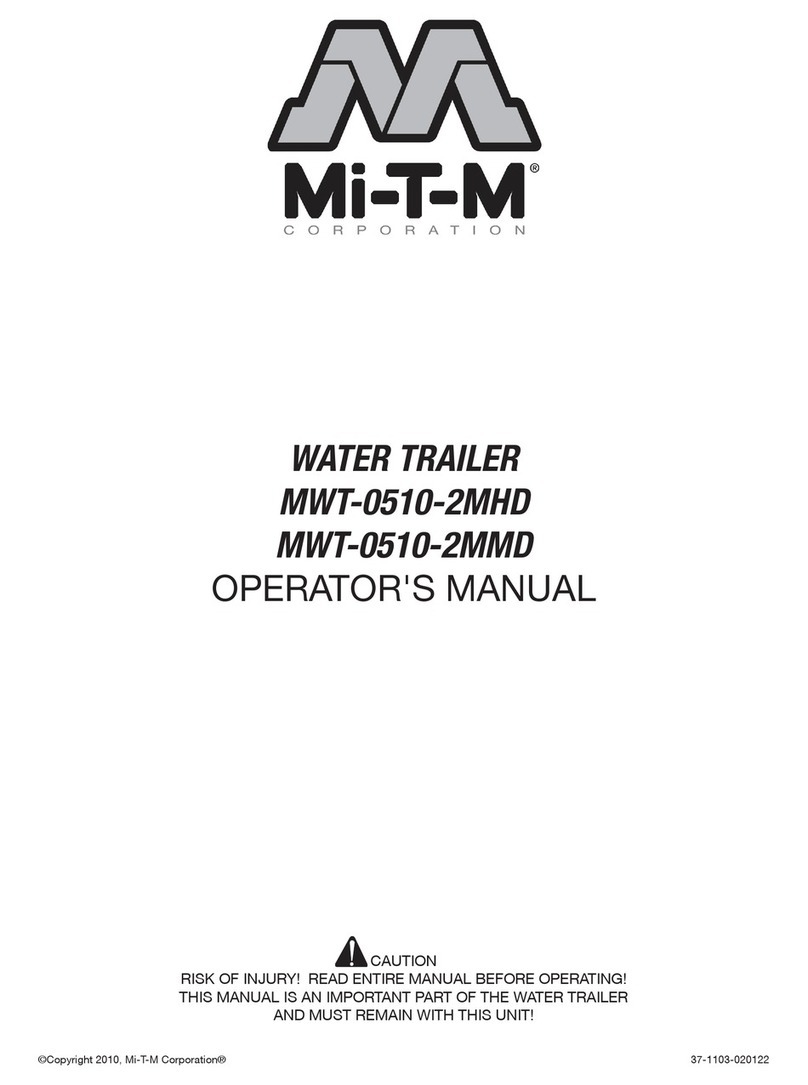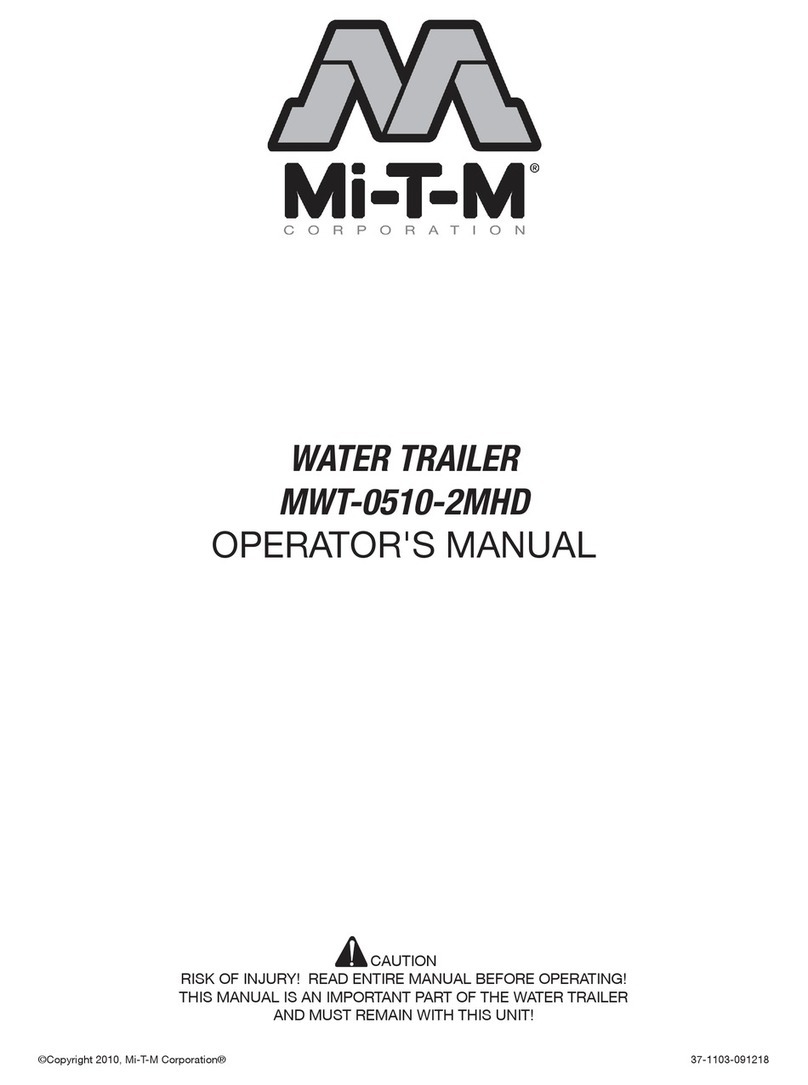
4 HMT-4004-0MGH Operator's Manual
POTENTIAL CONSEQUENCE PREVENTION
IMPORTANT SAFETY INSTRUCTIONS
READ ALL SAFETY WARNINGS BEFORE USING PRESSURE WASHER
RISK OF
EXPLOSION OR FIRE Serious injury or death may occur
from normal sparks in the multiple
ignition sources or engine/burner
exhaust.
Always operate pressure washer in a well
ventilated area free of ammable vapors,
combustible dust, gases or other combus-
tible materials.
Do not store the pressure washer near an
open ame or any equipment such as a
stove, furnace, water heater, etc., which
utilizes a pilot light or sparking device.
Do not use this pressure washer to spray
ammable material!
Do not smoke while lling fuel tanks.
Never ll the fuel tanks while the engine is
running or hot. Allow the engine to cool two
minutes before refueling.
Do not refuel indoors or in a poorly venti-
lated area.
Always refuel slowly to avoid the possibility
of spilled fuel which may cause a risk of re.
Engine Fuel Tank:
If using a Gasoline Engine, refuel with gaso-
line only. Do not use diesel or fuel oil.
Burner Fuel Tank:
When refueling the Burner Fuel Tank, use
No. 1 or No. 2 fuel oil/diesel or kerosene.
Do not use gasoline, crankcase drainings, or
oil containing gasoline or solvents.
Do not operate the unit if gasoline or diesel
fuel is spilled. Wipe the pressure washer
clean and move it away from the spill.
Avoid creating any ignition until the gasoline
or diesel fuel has evaporated.
When the battery is being activated, hydro-
gen and oxygen gases in the battery are
extremely explosive. Keep open sparks and
ames away from the battery at all times,
especially when charging the battery.
Be certain to disconnect the battery ground
terminal before servicing. When discon-
necting the cable from the battery, start
with the negative terminal, and when con-
necting them, start with the positive cable.
When charging the battery, remove the bat-
tery vent plugs.
Use only a voltmeter or hydrometer to check
a battery charge.
DO NOT jump start the battery unless both
batteries are of equal voltage and amper-
age.
HAZARD
Serious injury or death may occur
from the battery.
Serious injury or death may occur
as a result of improper fueling.





























